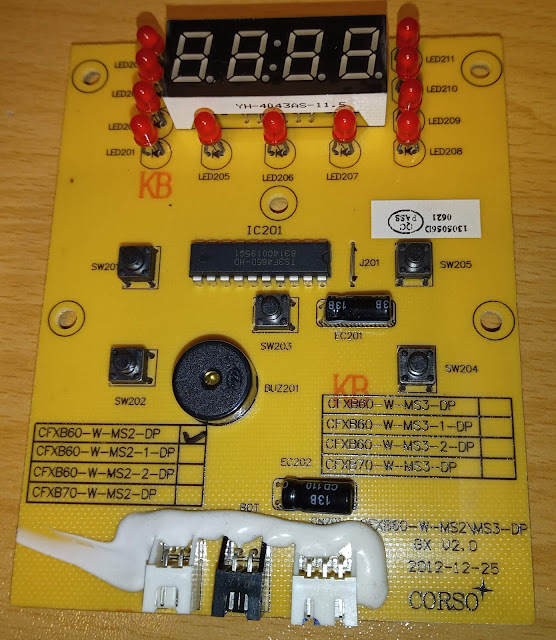Verify that the kernel module zfs.ko is included in the initramfs image with this bash script [CentOS 7, ZFS]
If you are using kmod-zfs you should expect that some of the kernels will not boot (because the zfs.ko module is not included in the corresponding initramfs images):
# check-initramfs-zfs.ko.centos.bash /boot/initramfs-0-rescue-7a7f370813524dd4b0a8bf9710545d76.img: zfs.ko MISSING /boot/initramfs-3.10.0-514.16.1.el7.x86_64.img: zfs.ko MISSING /boot/initramfs-3.10.0-514.21.1.el7.x86_64.img: zfs.ko MISSING /boot/initramfs-3.10.0-514.26.1.el7.x86_64.img: zfs.ko MISSING /boot/initramfs-3.10.0-514.26.2.bak1.el7.x86_64.img: OK /boot/initramfs-3.10.0-514.26.2.el7.x86_64.img: zfs.ko MISSING /boot/initramfs-3.10.0-693.5.2.el7.x86_64.img: OK
Make backup of the working kernel:
# cd /boot/ # cp initramfs-3.10.0-693.5.2.el7.x86_64.img initramfs-3.10.0-693.5.2.bak1.el7.x86_64.img # cp vmlinuz-3.10.0-693.5.2.el7.x86_64 vmlinuz-3.10.0-693.5.2.bak1.el7.x86_64
The script check-initramfs-zfs.ko.centos.bash:
#!/bin/bash ls /boot/initramfs*.img | while read initramfsimage; do lines=$(lsinitrd $initramfsimage | grep zfs.ko | wc -l) echo -ne "$initramfsimage:"; if [ "$lines" -eq "0" ]; then echo " zfs.ko MISSING" else echo " OK" fi done
Don't forget to change the version of the ZFS repo when updating your system. If you forget you will not get the zfs.ko for the latest kernel.
Setting the default kernel to Grub
Update the list of kernels in the Grub configuration:
# export ZPOOL_VDEV_NAME_PATH=YES # grub2-mkconfig -o /boot/grub2/grub.cfg Generating grub configuration file ... Found linux image: /boot/vmlinuz-3.10.0-693.5.2.el7.x86_64 Found initrd image: /boot/initramfs-3.10.0-693.5.2.el7.x86_64.img Found linux image: /boot/vmlinuz-3.10.0-693.5.2.bak1.el7.x86_64 Found initrd image: /boot/initramfs-3.10.0-693.5.2.bak1.el7.x86_64.img Found linux image: /boot/vmlinuz-3.10.0-514.26.2.el7.x86_64 Found initrd image: /boot/initramfs-3.10.0-514.26.2.el7.x86_64.img Found linux image: /boot/vmlinuz-3.10.0-514.26.2.bak1.el7.x86_64 Found initrd image: /boot/initramfs-3.10.0-514.26.2.bak1.el7.x86_64.img Found linux image: /boot/vmlinuz-3.10.0-514.26.1.el7.x86_64 Found initrd image: /boot/initramfs-3.10.0-514.26.1.el7.x86_64.img Found linux image: /boot/vmlinuz-3.10.0-514.21.1.el7.x86_64 Found initrd image: /boot/initramfs-3.10.0-514.21.1.el7.x86_64.img Found linux image: /boot/vmlinuz-3.10.0-514.16.1.el7.x86_64 Found initrd image: /boot/initramfs-3.10.0-514.16.1.el7.x86_64.img Found linux image: /boot/vmlinuz-0-rescue-7a7f370813524dd4b0a8bf9710545d76 Found initrd image: /boot/initramfs-0-rescue-7a7f370813524dd4b0a8bf9710545d76.img done
Verify that the GRUB_DEFAULT variable is set to 'saved':
# grep DEFAULT /etc/default/grub GRUB_DEFAULT=saved
The current default kernel is:
# grub2-editenv list saved_entry=CentOS Linux (3.10.0-514.16.1.el7.x86_64) 7 (Core)
Get the list of the kernels (and their number):
# awk -F\' '$1=="menuentry " {print i++ " : " $2}' /etc/grub2.cfg
0 : CentOS Linux (3.10.0-693.5.2.el7.x86_64) 7 (Core)
1 : CentOS Linux (3.10.0-693.5.2.bak1.el7.x86_64) 7 (Core)
2 : CentOS Linux (3.10.0-514.26.2.el7.x86_64) 7 (Core)
3 : CentOS Linux (3.10.0-514.26.2.bak1.el7.x86_64) 7 (Core)
4 : CentOS Linux (3.10.0-514.26.1.el7.x86_64) 7 (Core)
5 : CentOS Linux (3.10.0-514.21.1.el7.x86_64) 7 (Core)
6 : CentOS Linux (3.10.0-514.16.1.el7.x86_64) 7 (Core)
7 : CentOS Linux (0-rescue-7a7f370813524dd4b0a8bf9710545d76) 7 (Core)
Before to run the above command you must update the grub configuration (grub2-mkconfig) because it may give you incorrect numbers.
I set the number 1, because I want the second kernel (with 'bak1' in the filename). This way I am sure that the initramfs image will not be rebuilt (zfs.ko is present in the 'bak1' version of the initramfs image):
[root@server4 ~]# grub2-set-default 1
Verify the default kernel:
# grub2-editenv list saved_entry=1
Alternatively, we can use the name of the kernel (instead of the number):
# grub2-set-default "CentOS Linux (3.10.0-693.5.2.bak1.el7.x86_64) 7 (Core)"
Verify the default kernel:
# grub2-editenv list saved_entry=CentOS Linux (3.10.0-693.5.2.bak1.el7.x86_64) 7 (Core)
Now we can safely reboot the system. It will boot with the kernel 3.10.0-693.5.2.bak1.el7.x86_64 (image file /boot/initramfs-3.10.0-693.5.2.bak1.el7.x86_64.img). Just in case I make another test:
# lsinitrd /boot/initramfs-3.10.0-693.5.2.bak1.el7.x86_64.img | grep zfs.ko -rw-r--r-- 1 root root 3191696 Nov 14 21:12 usr/lib/modules/3.10.0-693.2.2.el7.x86_64/extra/zfs/zfs/zfs.ko lrwxrwxrwx 1 root root 58 Nov 14 21:11 usr/lib/modules/3.10.0-693.5.2.el7.x86_64/weak-updates/zfs/zfs/zfs.ko -> ../../../../3.10.0-693.2.2.el7.x86_64/extra/zfs/zfs/zfs.ko
And reboot:
# reboot
The reboot was successful. We verify that the default kernel was the one we selected:
# dmesg | grep BOOT_IMAGE [ 0.000000] Command line: BOOT_IMAGE=/ROOT@/boot/vmlinuz-3.10.0-693.5.2.bak1.el7.x86_64 root=ZFS=rpool/ROOT ro rhgb quiet [ 0.000000] Kernel command line: BOOT_IMAGE=/ROOT@/boot/vmlinuz-3.10.0-693.5.2.bak1.el7.x86_64 root=ZFS=rpool/ROOT ro rhgb quiet



Comments
Post a Comment